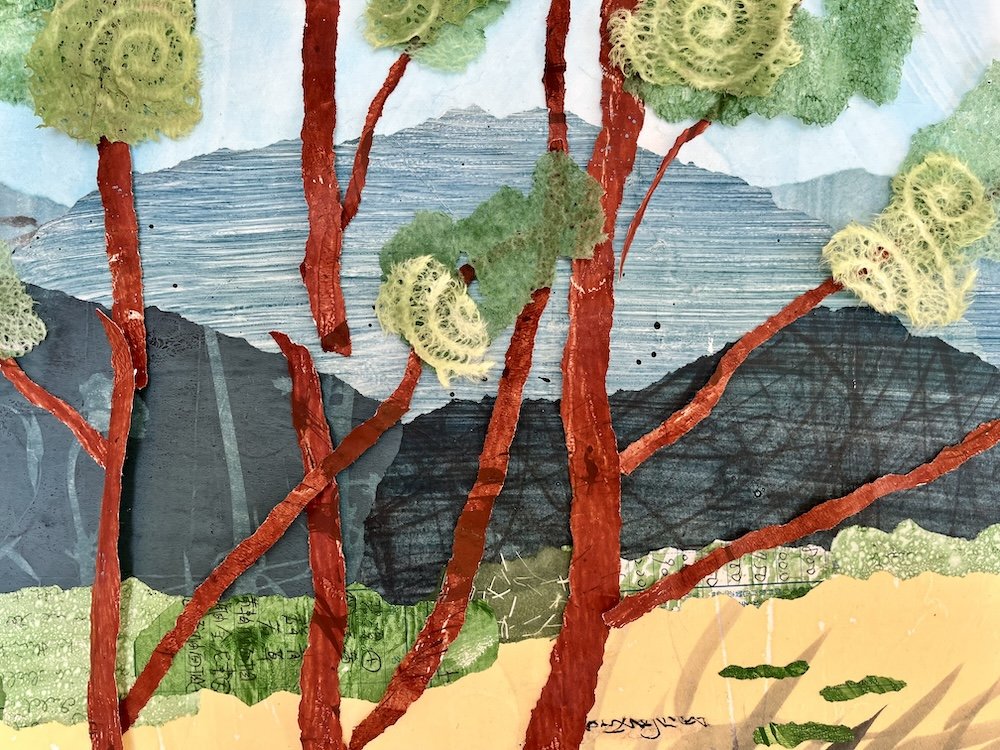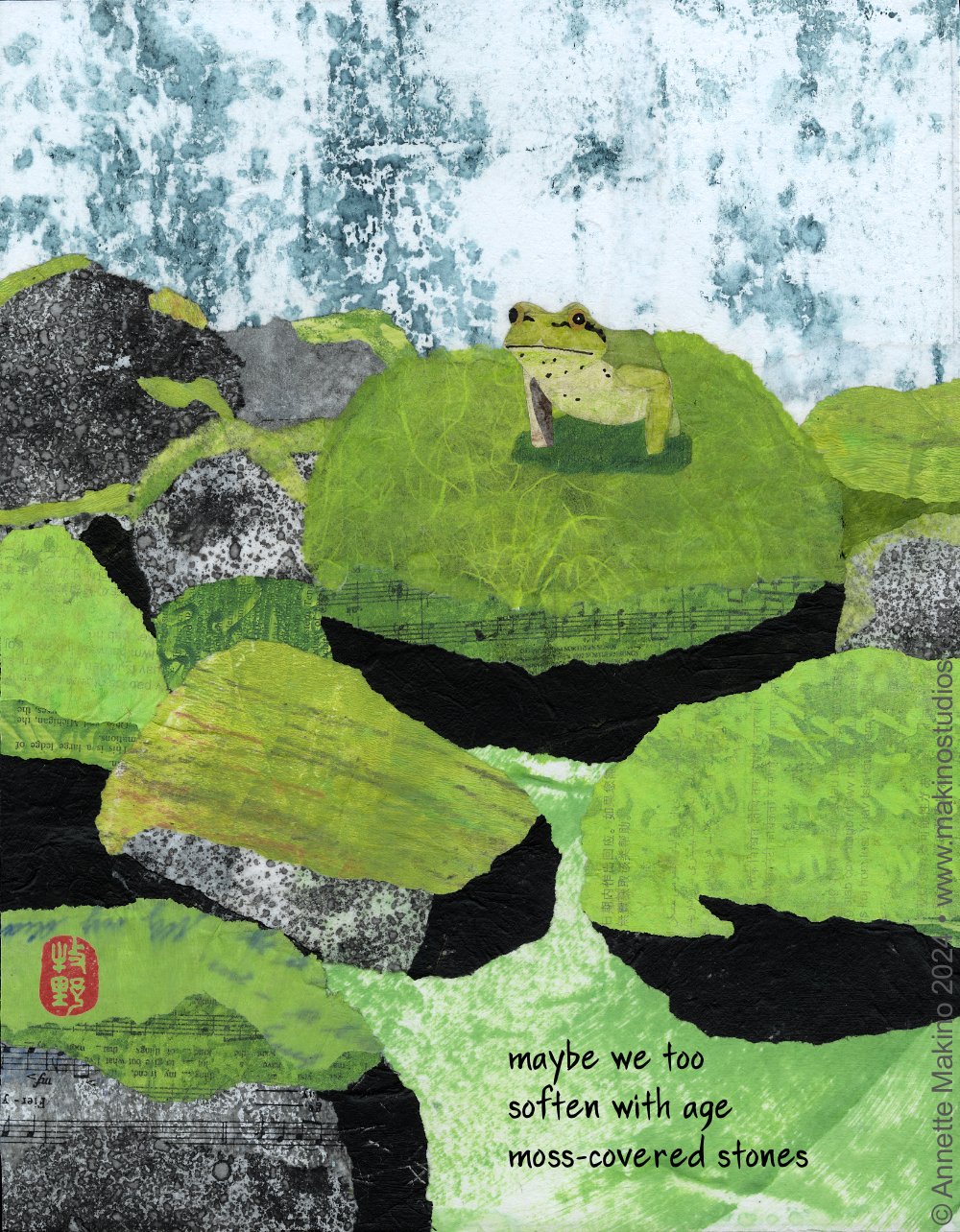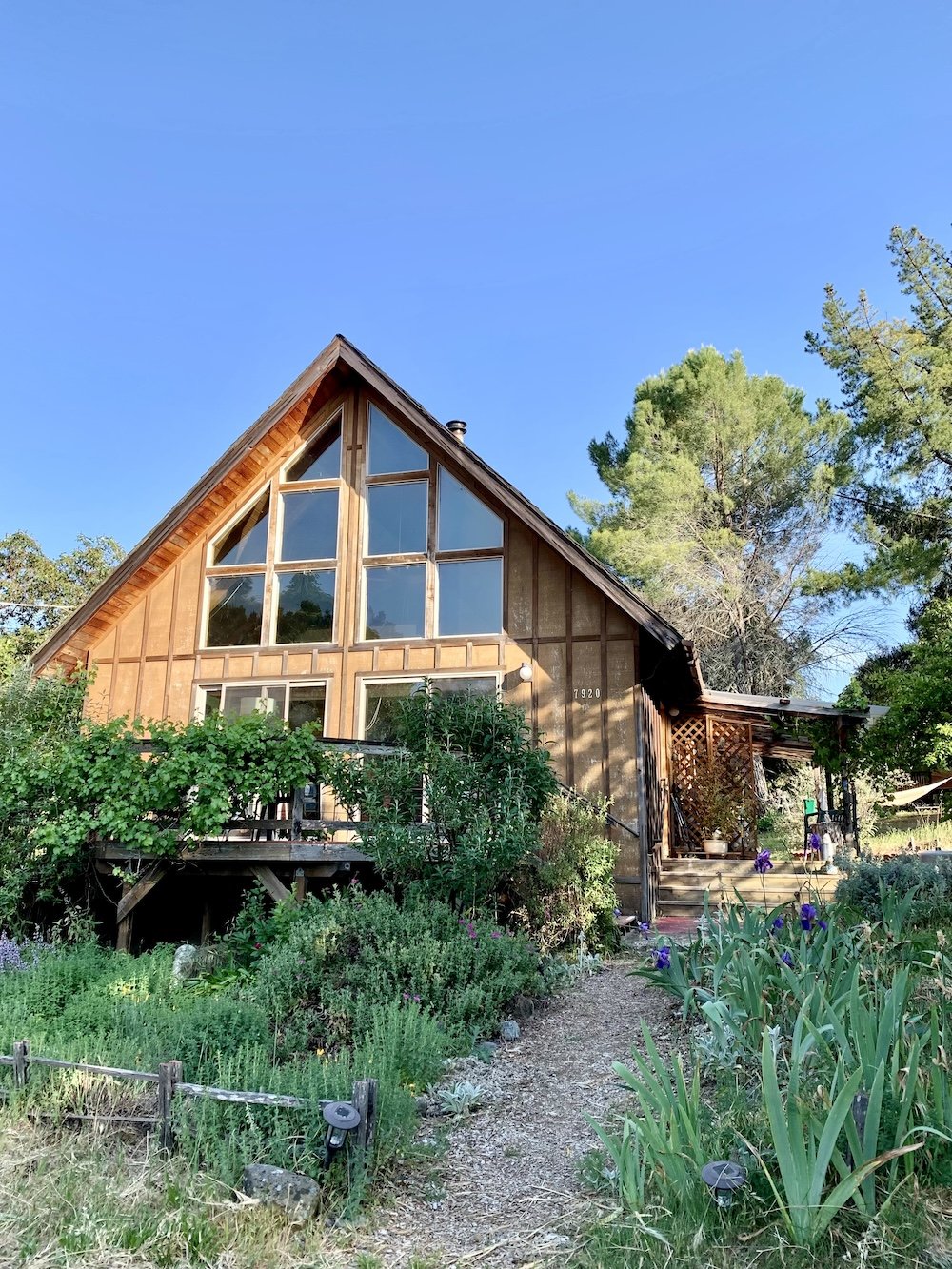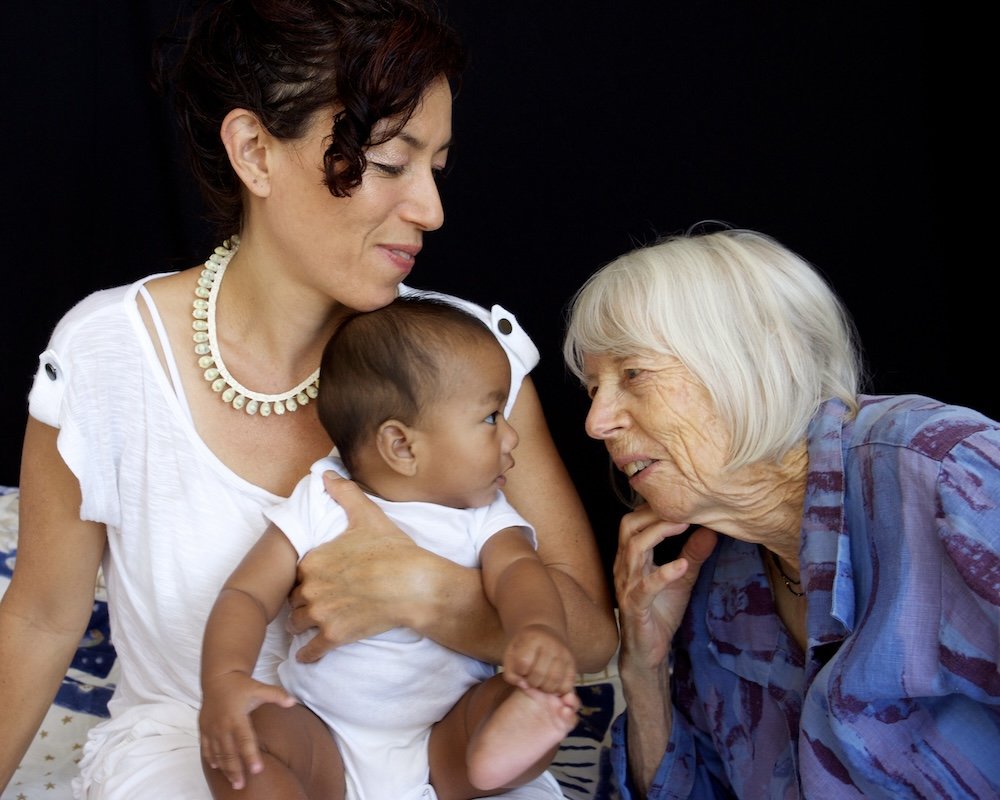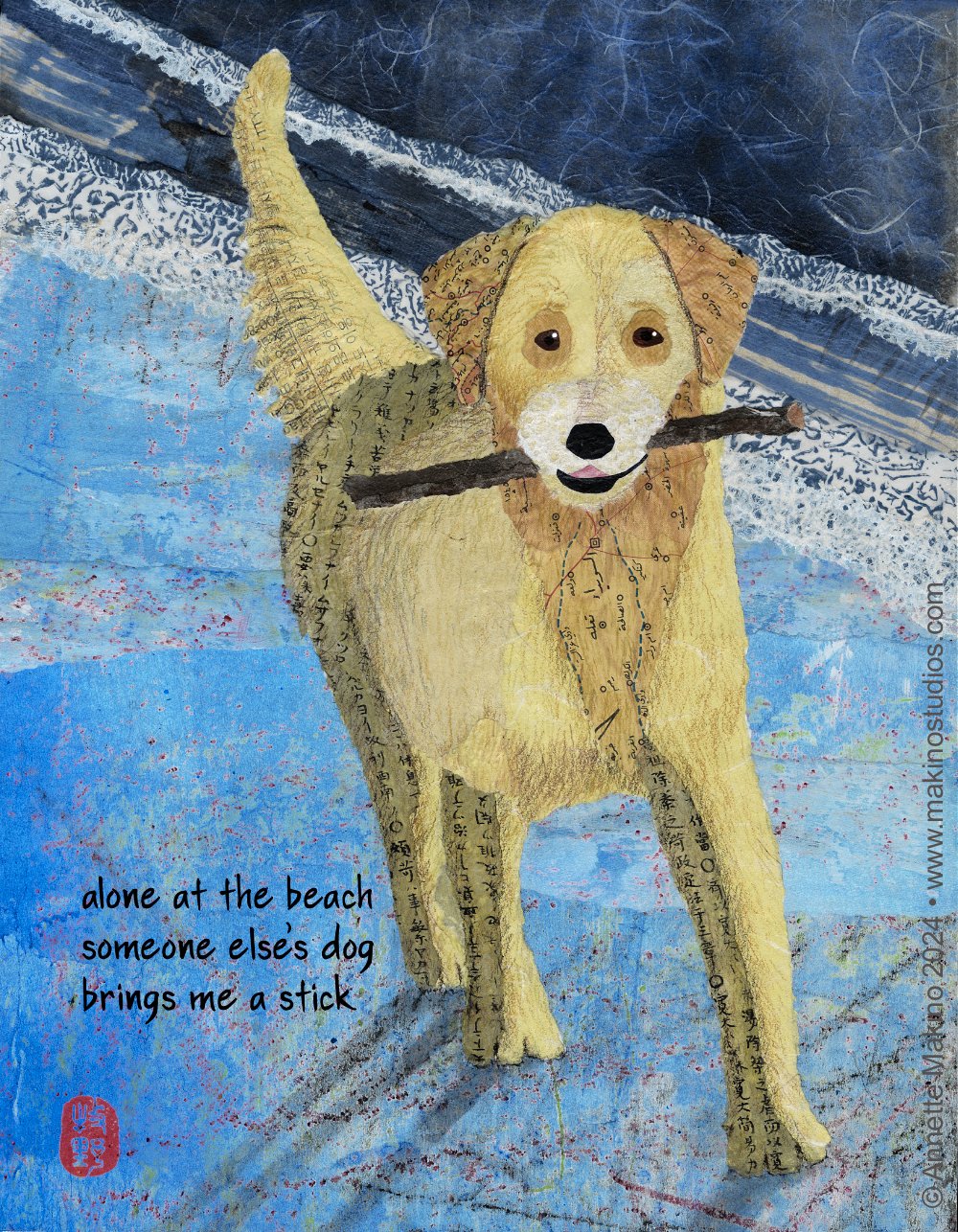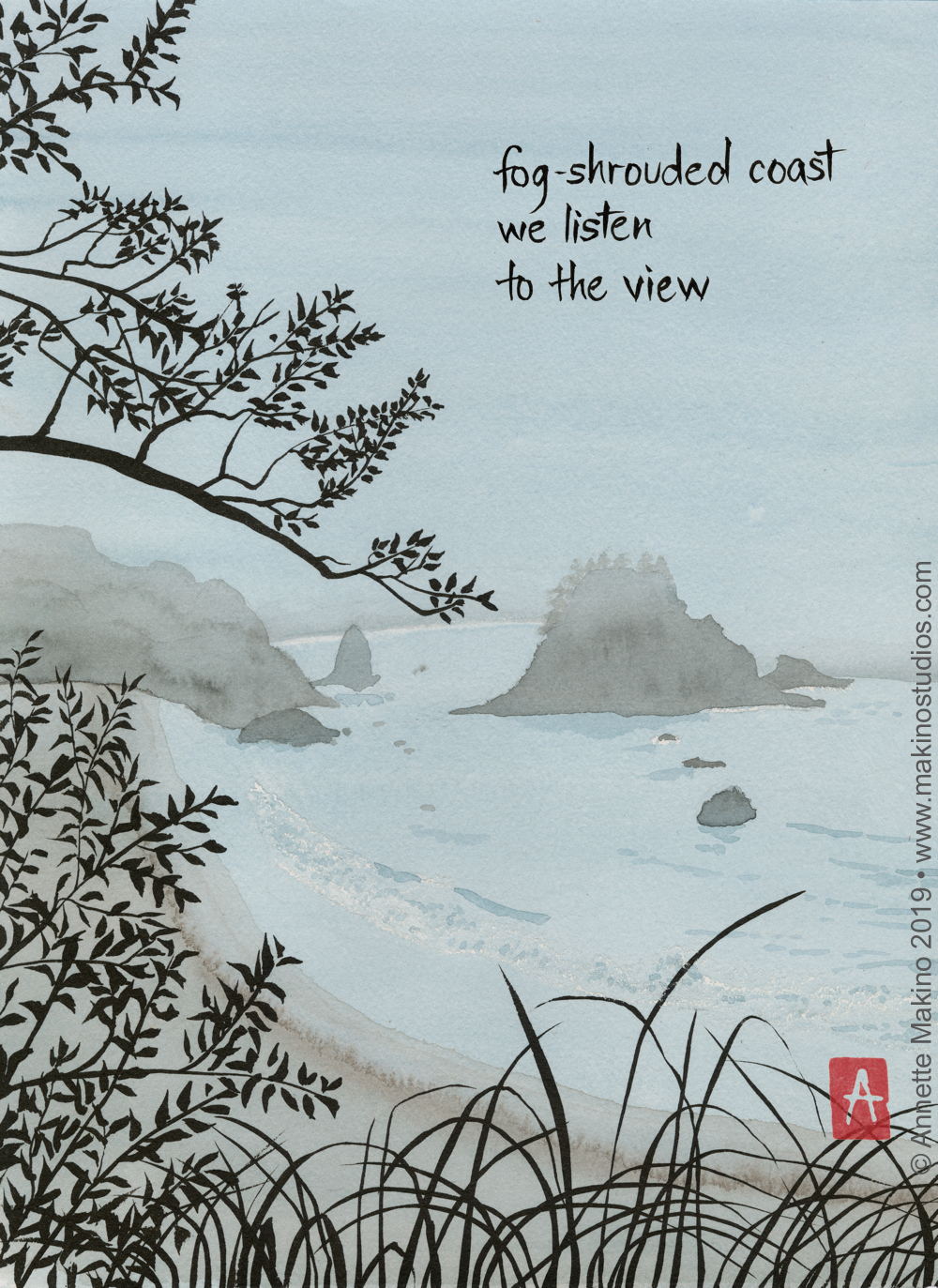Today I’m sharing my process for “Winding River,” one of the collages in the Ten Thousand Gates group show at the Morris Graves Museum of Art in Eureka, CA. This landscape is inspired by the Klamath River in Orleans, CA where I go every summer to relax and create.
After painting and embellishing the papers with acrylic paints, I tear and place them on the canvas.
Here’s a closeup of the madrone trees as I play with placement.
The papers I’ve painted are organized with each color in a separate bin. On my laptop is one of the photos I took for reference.
At work in the room where it happens! This collage incorporates vintage Japanese letters, old brush paintings, a letter from Germany, book pages, a receipt from Japan, choir music, an insurance letter, plant prints, charcoal and ink scribbles and washi papers.
“Winding River” is 36” x 24”, made with found papers, Japanese washi papers, acrylic paint, colored pencil, charcoal, ink and matte medium on canvas. © Annette Makino 2025
I also want to say, wow, what an amazing few days it’s been! A case of everything everywhere all at once. My keynote at the ukiaHaiku Festival was very well-received and it was sweet to headline this event celebrating haiku in my old hometown of Ukiah, CA. The art opening for the Ten Thousand Gates group show at the Morris Graves Museum in Eureka, CA beautifully showcased the dynamic and diverse work of twelve artists of Asian descent. And the Ink to Paper reading that I organized—the first in Humboldt County to feature all Asian American poets—found a warm audience. Thank you to everyone who came out to these events!
As if all that weren’t enough, in the same ten-day period one of my haibun (prose with haiku) was featured by the poetry journal Rattle. I also spoke on an hour-long Thursday Night Talk panel on KZZH Access Humboldt about the weekend of local events celebrating Asian American and Pacific Islander heritage. And haiku luminary Brad Bennett focussed an entire session of his haiku class on my poems and haiga (art with haiku).
All this is a lot for an introvert! But it was really fun and rewarding, a validation of the art and poetry path I stepped onto fifteen years ago. And . . . I’m taking a much-needed vacation May 20-June 8.
stubbled wheat field
learning to let myself
just rest
Though Makino Studios orders will still be shipped, they may take longer to go out. So I’m offering 15% off everything in the shop through midnight this Sunday, Mother’s Day, with code MOMS15.
Happy Mother’s Day to the moms of all kinds out there, and enjoy these late spring days!
•
Makino Studios News
Ten Thousand Gates - A Humboldt Celebration of Asian Artists: This art show at the Morris Graves Museum of Art in Eureka, CA features twelve artists of Asian descent: Karla Kaizoji Austin, Cate Be, Jeremy Hara, Ted Hsu, the late Suk Choo Kim, Ali Lee, Thao Le Khac, Amy Leon, Annette Makino, Yoshiko Skelton, Amy Uyeki and Libby Yee. The art ranges from traditional landscapes to contemporary street art. The show runs through June 8.
North Coast Open Studios: I will share my art and process during the second weekend of this fun event that takes place all around Humboldt County. On this 25th anniversary of North Coast Open Studios, I’m joining half a dozen international artists plus local artists at Creekside Arts in Freshwater, CA on Saturday and Sunday, June 14-15 from 10 to 5.
Mother’s Day Sale: Use code MOMS15 at checkout to get 15% off all cards, notecard sets, books, prints and calendars in the shop. Offer expires this Sunday, May 11 at midnight. Excludes original art.
Vacay plans: I will be on vacation May 20 to June 8, and Makino Studios orders will go out slowly while I’m gone. Sorry for the wait!
Cards for graduation, wedding and more: You can browse the card collection for these occasions and others.
•
“stubbled wheat field” was published in Mariposa, #50, Spring/Summer 2024



